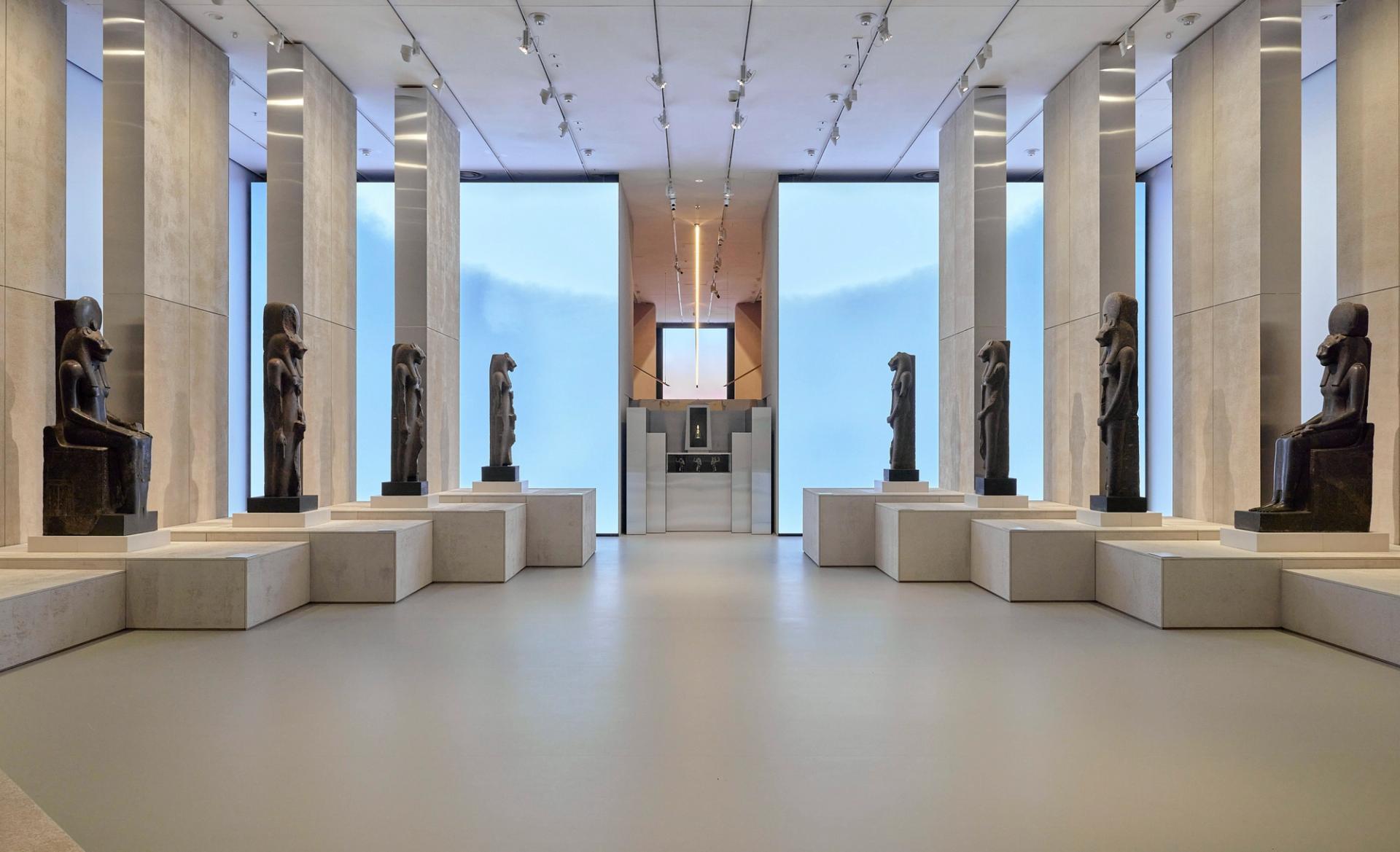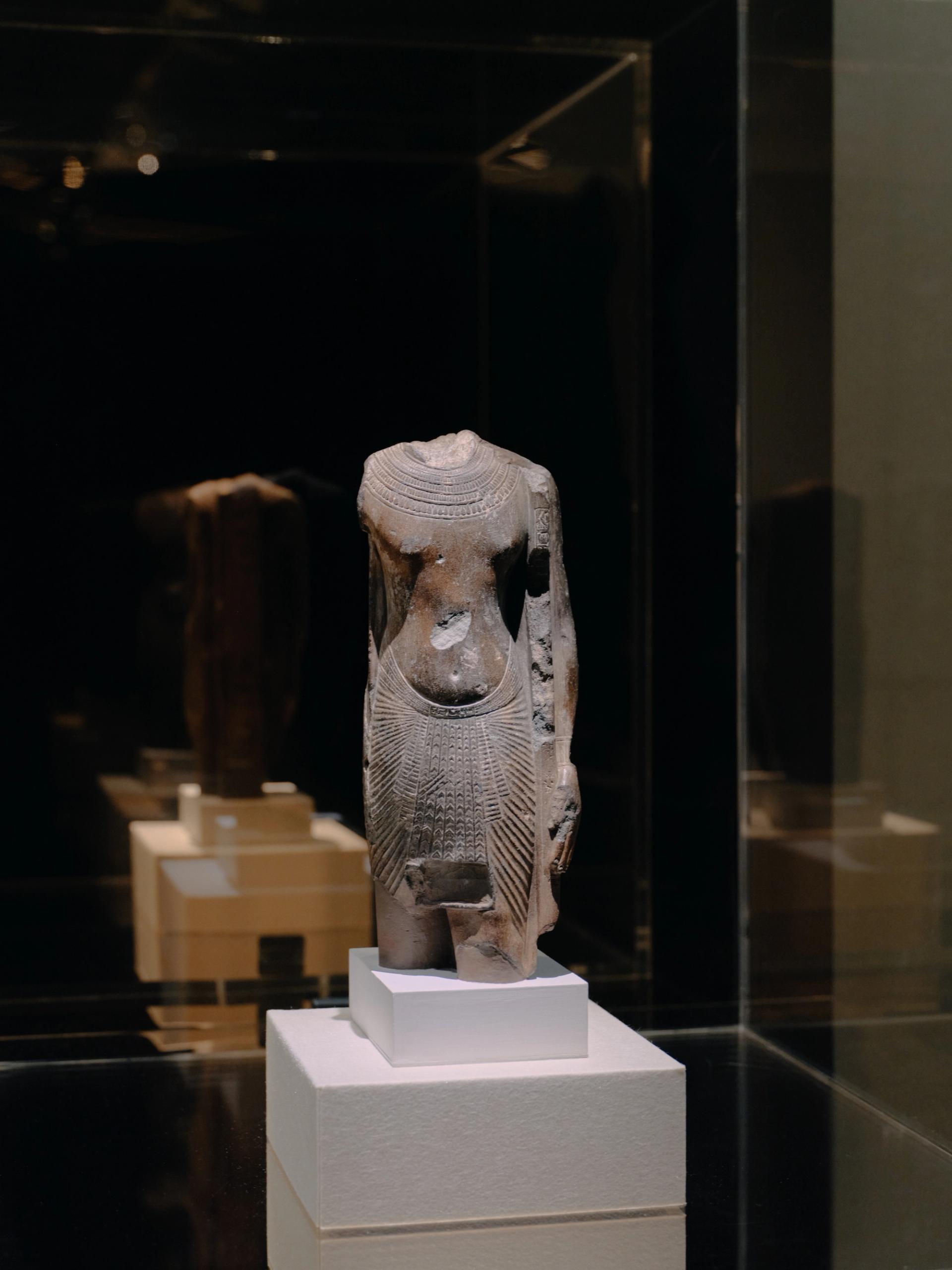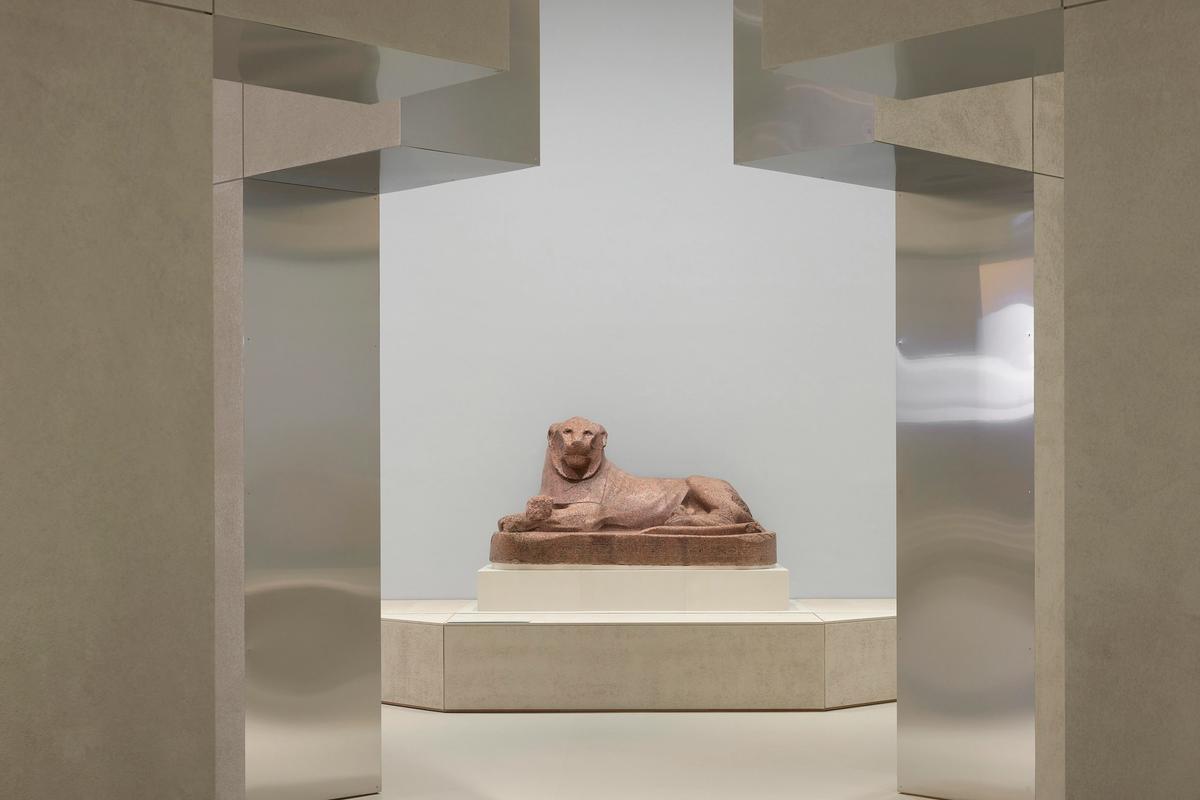An innovative display of British Museum artefacts in an Australian art gallery may end up helping to shape redevelopment plans for the London museum's Egyptian collection areas.
The British Museum (BM) exhibition, Pharaoh, opened at the National Gallery of Victoria (NGV) on 14 June and is the largest exhibition the museum has ever sent overseas. It was eight years in development.
The museum’s curators were in Melbourne this week for the show’s opening. They were so impressed by the NGV’s exhibition design, they told The Art Newspaper they might adopt some of its elements back home in Bloomsbury.
Marie Vandenbeusch, the curator of funerary culture of the Nile Valley in the BM’s department of Egypt and Sudan, and Daniel Antoine, the keeper of the department of Egypt and Sudan, said they were delighted to see how the objects were presented at the NGV.
Designed by the NGV in association with the BM, the exhibition has a poetic atmosphere. Soft, recessed lighting evokes desert sunsets, and digital projections conjure the lapping waters of the life-giving Nile.
Mirrored walls have been used to multiply the rows of monumental sculptures and reflect the delicate blue of the Nile projection.
Vandenbeusch said some of the NGV’s design elements would work well in the BM’s future display.
“Something that I really love is the fact that usually ancient Egyptian exhibitions are very dark, (but) you're going to see some of the rooms full of light,” she said.
“That’s so Egyptian because in Egypt it's really bright and beautiful and I really love the way they actually played with that in this exhibition.”
Another design element Vendenbeusch approved of was the generous space between and around the objects.
“There's just so much space, and it really allows [you] to see everything in the round, but also to have perspective that you don't necessarily have [in the museum],” she said.
“Every time you look at an object that you think you know, and suddenly you look at it in a different perspective in the beautiful light and so on.”

Photo: © Sean Fennessy
The collaboration with the NGV—which, as an art gallery, is not the customary venue for an ancient Egyptian show—had been “really interesting”. Vandenbeusch said. “It's not something that we have really done that much in the past, but I think it's really interesting to have this new dialogue between two different worlds.”
The BM has announced an architectural competition for its major redesign masterplan, to be overseen by the museum’s new director Nicholas Cullinan.
The Ancient Egypt spaces will be refurbished, among other areas of the museum. “It’s the very beginning of a massive project; it’s going to take a long time,” Vandenbeusch said. The BM’s Egypt team is thinking hard about redesign possibilities right now, Antoine added.
Another focus for the team is working towards the completion of the Egyptian collection digitisation programme. The collection boasts 83,000 records, some of them made up of multiple artefacts.
The BM’s Egyptian holdings have particular depth in relation to funerary customs, mummified remains and papyri, Antoine said.
Pharaoh is exclusive to Melbourne and is the BM’s largest ever international exhibition. It includes more than 500 works, from monumental sculpture to coffins and funerary objects and jewellery. The exhibition spans the period from the First Dynasty (around 3,000 BC) to the Roman period (third century).
There are objects pertaining to the reigns of Tutankhamun, Ramses II, Queen Nefertari and Khufu, among others.
Some of the objects have never been exhibited before. These include at least one of the granodiorite statues of the lion-headed goddess Sekhmet, which underwent extensive conservation before visiting Melbourne. “She’s absolutely fantastic,” Vandenbeusch said.
An object the curator had never seen before, and which is in the exhibition, is a painted limestone wall from the mastaba tomb of Urirenptah and Khentkaus (Fifth Dynasty).
It took specialists around 600 hours to conserve the section of wall, which measures three metres wide by almost 2.5 metres high.

Statuette of Pharaoh Tutankhamun, usurped by Horemheb Photo: © Tom Ross
While all the objects rightly exude power and invincibility, there are some that Vandenbeusch included precisely because of the little human errors they betray.
Into this category falls the serpentinite object, Statue of Tutankhamun, usurped by Horemheb (around 1336-1327 BC). The original hieroglyphics on the back of the figure said the statue was of the "boy king".
But a later artisan gouged that out and began writing Horemheb when that king took over. “The person who did that made a mistake and wrote it going in the wrong direction,” Vandenbeusch said. “They started and they thought, ‘oh, whatever’, and they stopped. That's the kind of story that I love. “
Pharaoh was curated especially for the NGV as part of the Victorian government’s Melbourne Winter Masterpieces series.
In Sydney, the Australian Museum’s Ramses and the Gold of the Pharaohs exhibition closed on 19 May. It was the most successful exhibition ever at that museum, with more than 500,000 tickets sold.
Pharaoh is on display at the National Gallery of Victoria, Melbourne, until 6 October.


